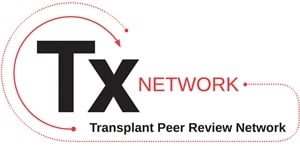Journal list menu
Export Citations
Download PDFs
COVER IMAGE
American Journal of Transplantation: Volume 19, Number 7, July 2019
- First Published: 24 June 2019
On the Cover: The United States Congress has for decades failed to adopt a means of providing sustained immunosuppressive drug coverage for recipients of kidney transplants, despite objective evidence from the General Accounting Office that doing so would save taxpayer dollars and convincing data from the federal registry of transplant outcomes demonstrating that transplant outcomes would improve and American lives be saved. This month, Hart et al (page 1964) provide further evidence that kidney transplant graft loss is directly hastened by federal Medicare policy. Vanessa Grubbs provides a thoughtful commentary (page 1877) asking the salient question, “Why does Congress fail to pass Medicare immunosuppressant coverage laws that save grafts—and lives?” Cover design by Lauren Halligan, Duke University Department of Surgery.
THE AJT REPORT
A Path Toward Improving Health Literacy and Transplant Outcomes
- Pages: 1871-1872
- First Published: 24 June 2019
This month's installment of “The AJT Report” discusses current, innovative efforts to increase health literacy among transplant patients to improve posttransplant results. We also report on a recent case of acquired food allergy via lung transplantation.
LITERATURE WATCH
Lymph node segregation for tolerance or inflammation
- Page: 1873
- First Published: 24 June 2019
Select gut lymph node drainage is associated with tolerogenicity versus immunogenicity of intestinal antigens, a phenomenon that may be co-opted to promote tolerance or boost vaccination.
EDITORIALS
Runaway powerhouse: Donor mitochondria promote rejection
- Pages: 1875-1876
- First Published: 11 March 2019
This commentary discusses a novel role of mitochondrial DAMPs in allograft rejection reported by Lin et al (page 1917).
Medicare immunosuppressive drug coverage bills—Can we afford them?
- Pages: 1877-1878
- First Published: 08 March 2019
This editorial calls into question why Congress fails to pass Medicare immunosuppressant coverage laws that save grafts—and lives. See the article from Hart et al on page 1964.
A liver in the hand is worth two in the bush: Survival disadvantage of declining older liver offers
- Pages: 1879-1880
- First Published: 12 February 2019
Thoughtful utilization of older donor livers may provide survival benefit for liver transplant candidates, and may be facilitated by changes to allocation policy, novel technologies for organ perfusion, and shifting regulatory scrutiny away from 1-year posttransplant survival. Haugen et al's findings are reported on page 2020.
MINIREVIEW
The neonatal Fc receptor: Key to homeostasic control of IgG and IgG-related biopharmaceuticals
- Pages: 1881-1887
- First Published: 23 March 2019
This minireview examines functions of the scavenger receptor for IgG that could be leveraged to manipulate the half-life of therapeutic IgG biologics and pathogenic IgG antibodies in transplant recipients.
SPECIAL ARTICLE
Time for reform in transplant program–specific reporting: AST/ASTS transplant metrics taskforce
- Pages: 1888-1895
- First Published: 23 April 2019
The AST/ASTS Transplant Metrics Taskforce examines the relevance of current program-specific reporting for kidney transplantation in the modern era.
MEETING REPORT
Frailty in liver transplantation: An expert opinion statement from the American Society of Transplantation Liver and Intestinal Community of Practice
- Pages: 1896-1906
- First Published: 13 April 2019
This summary statement about frailty in liver transplantation addresses how to define and measure frailty, and how to incorporate frailty into the care of patients with end-stage liver disease, including those awaiting liver transplantation.
PERSONAL VIEWPOINTS
Moving past “think local, act global”: A perspective on geographic disparity
- Pages: 1907-1911
- First Published: 20 August 2018
The authors examine the drivers of geographic disparity in liver transplantation, with a critical analysis of the utility of donor service area and state of residence in patient listing patterns. See a counterpoint from Samstein and McElroy on page 1912.
Agree on much, except it is time for change
- Pages: 1912-1916
- First Published: 18 March 2019
The authors respond to Lynch et al (page 1907) and argue that competition through increased sharing is good, changes to allocation policy should enhance transparency, and innovative approaches that increase demand for all organs should be encouraged.
ORIGINAL ARTICLES
Basic Science
Circulating mitochondria in organ donors promote allograft rejection
- Pages: 1917-1929
- First Published: 14 February 2019
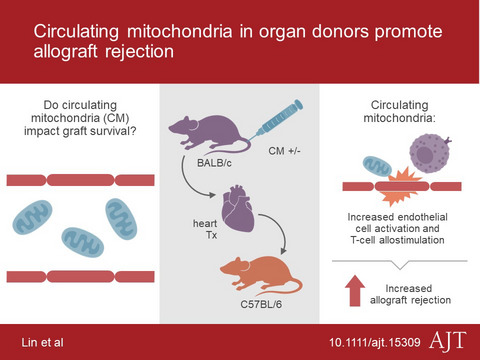
In this study, the authors demonstrate that circulating extracellular mitochondria in deceased organ donors activate endothelial cells and promote graft rejection in transplant recipients. See the editorial from Valujskikh on page 1875.
Alginate-microencapsulation of human stem cell–derived β cells with CXCL12 prolongs their survival and function in immunocompetent mice without systemic immunosuppression
- Pages: 1930-1940
- First Published: 12 February 2019
Alginate-microencapsulation of human stem cell–derived beta cells with CXCL12 enhances immunoprotection and prolongs functional survival without systemic immunosuppression.
R707, a fully human antibody directed against CC-chemokine receptor 7, attenuates xenogeneic acute graft-versus-host disease
- Pages: 1941-1954
- First Published: 12 February 2019
A therapeutic antibody against CC-chemokine receptor 7 is shown to prevent acute GVHD while sparing antitumor immune effects in mouse hematopoietic stem cell transplant models.
Assessing the utilization of high-resolution 2-field HLA typing in solid organ transplantation
- Pages: 1955-1963
- First Published: 08 January 2019
Data from two transplant centers shows that high resolution 2-field HLA typing is highly instructive and necessary to evaluate a significant portion of solid organ pre- and posttransplant cases.
Clinical Science
The association between loss of Medicare, immunosuppressive medication use, and kidney transplant outcomes
- Pages: 1964-1971
- First Published: 05 March 2019
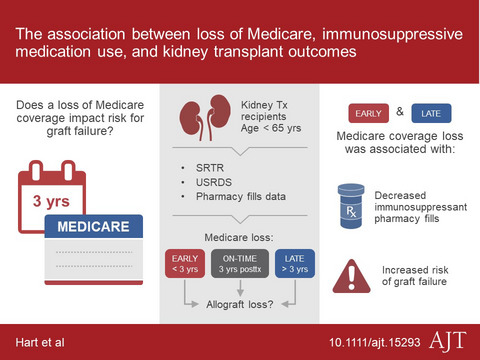
Kidney transplant recipients who lost Medicare coverage before or after 3 years posttransplant were at dramatically increased risk of lower immunosuppression use and allograft failure, whereas those who lost Medicare on time were not, suggesting that ensuring Medicare access before and after 3 years posttransplant may improve graft survival. An accompanying editorial is on page 1877.
Response to treatment and long-term outcomes in kidney transplant recipients with acute T cell–mediated rejection
- Pages: 1972-1988
- First Published: 12 February 2019
The authors define the response to treatment of acute T cell–mediated rejection in a prospective cohort of kidney transplant recipients and report how a multidimensional approach using a systematic clinical, histological, and immunological evaluation highlights posttreatment i-IF/TA and anti-HLA DSAs as main determinants of prognostic heterogeneity in these patients.
Larger nephron size, low nephron number, and nephrosclerosis on biopsy as predictors of kidney function after donating a kidney
- Pages: 1989-1998
- First Published: 10 January 2019
Larger nephron size, low nephron number, and nephrosclerosis are each predictive of developing measured GFR, albuminuria, or hypertension after donation.
Leveraging marginal structural modeling with Cox regression to assess the survival benefit of accepting vs declining kidney allograft offers
- Pages: 1999-2008
- First Published: 06 February 2019
Accepting, rather than declining, a kidney allograft offer is associated with a significant and clinically meaningful survival benefit.
The landscape of international living kidney donation in the United States
- Pages: 2009-2019
- First Published: 07 January 2019
While international donors may provide an alternative opportunity for living kidney donation in the United States, the authors raise an important concern that the majority of international kidney donors are lost to follow-up as early as 6 months postdonation.
Survival benefit of accepting livers from deceased donors over 70 years old
- Pages: 2020-2028
- First Published: 07 January 2019
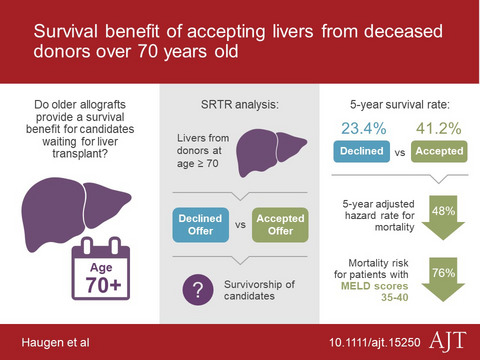
The authors find a significant survival benefit of liver transplantation with acceptance of offers from donors over age 70 for candidates with MELD 15–40. See Volk and Abt's editorial on page 1879.
A national mandatory-split liver policy: A report from the Italian experience
- Pages: 2029-2043
- First Published: 12 February 2019
The introduction of a mandatory split policy in the Italian liver allocation system significantly increases the split liver transplantation rate, providing a favorable impact on the pediatric liver transplantation waiting list without harming the adult liver transplantation waiting list.
Geographic disparities in liver supply/demand ratio within fixed-distance and fixed-population circles
- Pages: 2044-2052
- First Published: 12 February 2019
Modeled smaller fixed-distance and fixed-population circles do not predict reduced geographic disparities in liver supply/demand, but modeled larger fixed-distance and fixed-population circles do.
Risk stratification of myocardial injury after liver transplantation in patients with computed tomographic coronary angiography–diagnosed coronary artery disease
- Pages: 2053-2066
- First Published: 17 January 2019
Liver transplant recipients with noninvasive computed tomographic coronary angiography–diagnosed obstructive coronary artery disease and those with severe stenosis show occurrences of 6.2% and 8.9%, respectively, of post–liver transplant type 2 myocardial infarction, which results in 16.7% of 90-day all-cause mortality.
Variables of importance in the Scientific Registry of Transplant Recipients database predictive of heart transplant waitlist mortality
- Pages: 2067-2076
- First Published: 19 January 2019
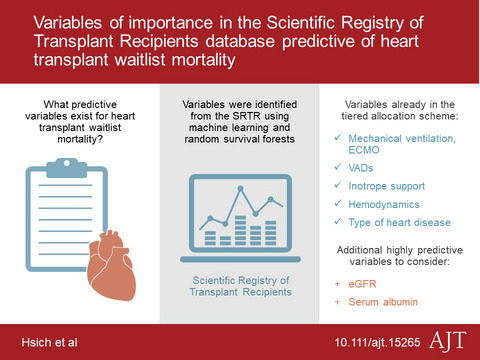
The most predictive variables for waitlist mortality in adults on the active heart transplant waitlist in the Scientific Registry of Transplant Recipients database from January 1, 2004–August 31, 2015, are in the current tiered allocation system, except for eGFR and serum albumin, which have an additive risk and complex interactions.
Long-term survival in visceral transplant recipients in the new era: A single-center experience
- Pages: 2077-2091
- First Published: 23 January 2019
While visceral transplantation has better long-term outcomes in the new era, survival could improve significantly with proper graft selection, shorter cold ischemia time, and improved immunosuppression regimens.
BRIEF COMMUNICATIONS
IL-2 therapy preferentially expands adoptively transferred donor-specific Tregs improving skin allograft survival
- Pages: 2092-2100
- First Published: 12 February 2019
Combining adoptive transfer of donor-specific Tregs with low dose IL-2 has a synergistic effect in prolonging MHC-class I–mismatched skin transplant survival due to antigen-driven Treg expansion.
MOC
Outcomes of liver transplantation for acute fatty liver disease of pregnancy
- Pages: 2101-2107
- First Published: 24 April 2019
Using the SRTR database, the authors identify all women who underwent liver transplantation (LT) for acute fatty liver disease of pregnancy (AFLP) and compare their outcomes and patient characteristics with women transplanted for acute liver failure from acetaminophen and non-acetaminophen etiologies, and find that women who underwent LT for AFLP had similar overall mortality outcomes, but a trend toward worse graft survival and more rejection episodes.
Beyond death and graft survival—Variation in outcomes after liver transplant. Results from the NSQIP transplant beta phase
- Pages: 2108-2115
- First Published: 18 March 2019
The report details preliminary findings of the NSQIP Transplant beta phase, highlighting significant variation in 30-day postsurgical outcomes beyond basic patient and graft survival.
CASE REPORTS
Reversal of secondary protein-losing enteropathy after surgical revision of a jejunal Roux-en-Y loop in a patient after liver transplantation
- Pages: 2116-2121
- First Published: 14 March 2019
The authors detect focal protein loss and treat protein-losing enteropathy in a pediatric transplant recipient via surgical revision of the Roux-en-Y loop.
Small bowel and abdominal wall transplantation: A novel technique for synchronous revascularization
- Pages: 2122-2126
- First Published: 26 March 2019
The authors describe a novel technique of synchronous abdominal wall and small bowel transplantation wall in a 37-year-old male with short gut syndrome and loss of domain.
REPORTS FROM THE CDC: MMWR
Increase in measles cases — United States, January 1–April 26, 2019
- Pages: 2127-2130
- First Published: 24 June 2019
Notes from the field: Measles outbreaks from imported cases in Orthodox Jewish communities — New York and New Jersey, 2018–2019
- Pages: 2131-2133
- First Published: 24 June 2019
Notes from the field: Community outbreak of measles — Clark County, Washington, 2018–2019
- Pages: 2134-2135
- First Published: 24 June 2019
These articles present the current measles outbreaks in the United States, something that could seriously affect nonimmune transplant recipients.
IMAGES IN TRANSPLANTATION
CME
Facial palsy in a kidney transplant recipient
- Pages: 2136-2138
- First Published: 24 June 2019
LETTERS TO THE EDITOR
Dengue virus transmission from live donor liver graft: A comment
- Page: 2139
- First Published: 12 February 2019
Dengue virus transmission from live donor liver graft: Comments and clarifications
- Page: 2140
- First Published: 15 February 2019
Clinical implications for the use of a biomarker for subclinical rejection – Conflating arguments cause a disconnection between the premise and the conclusion
- Pages: 2141-2142
- First Published: 26 February 2019




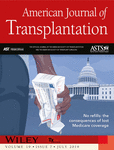
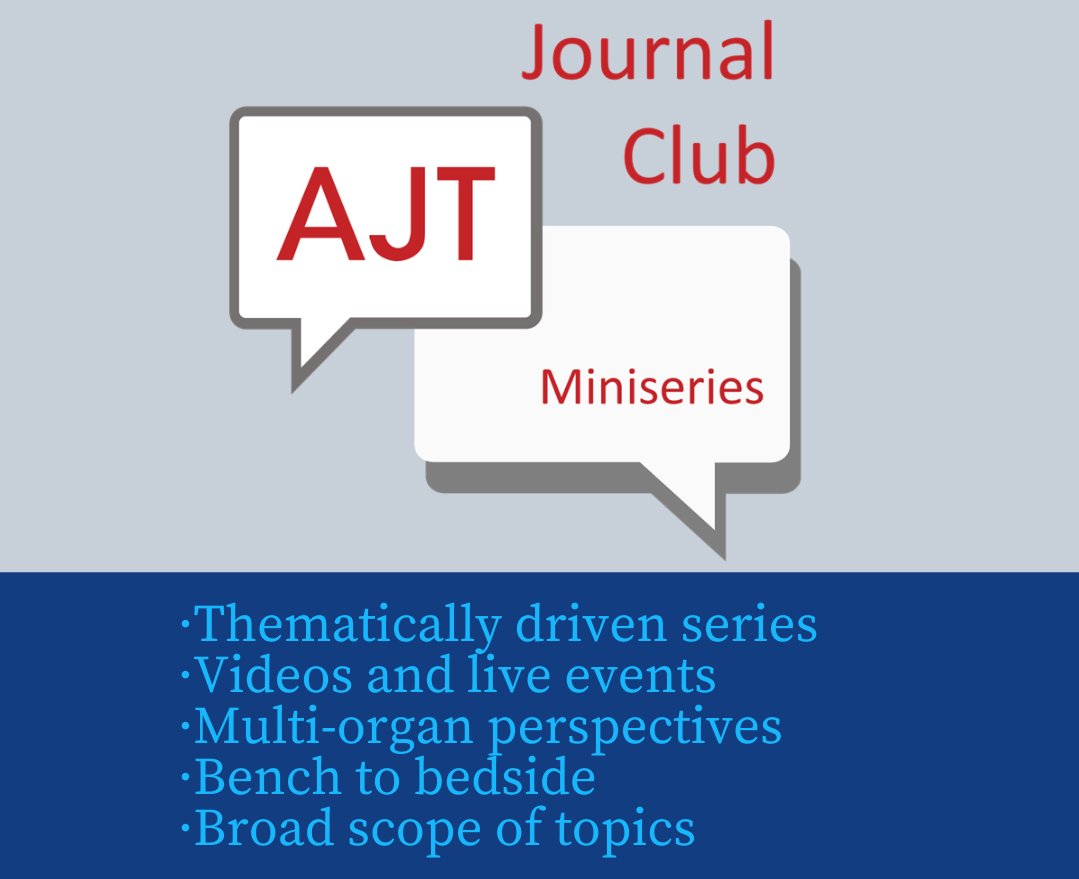


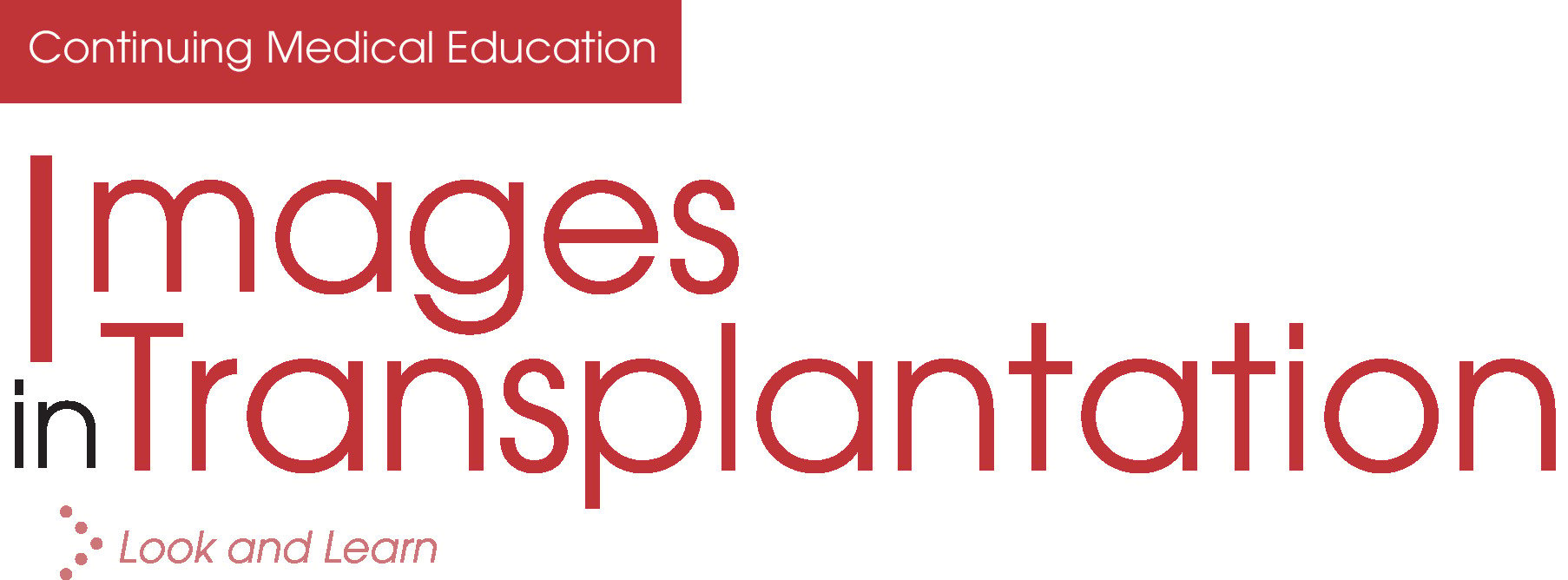
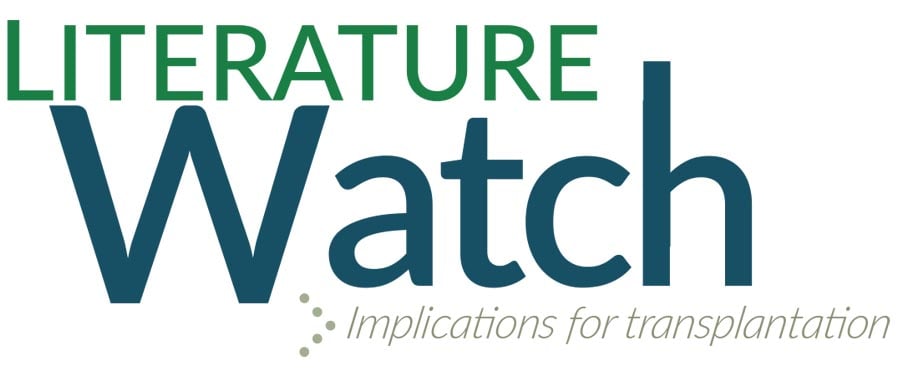
.jpg)
